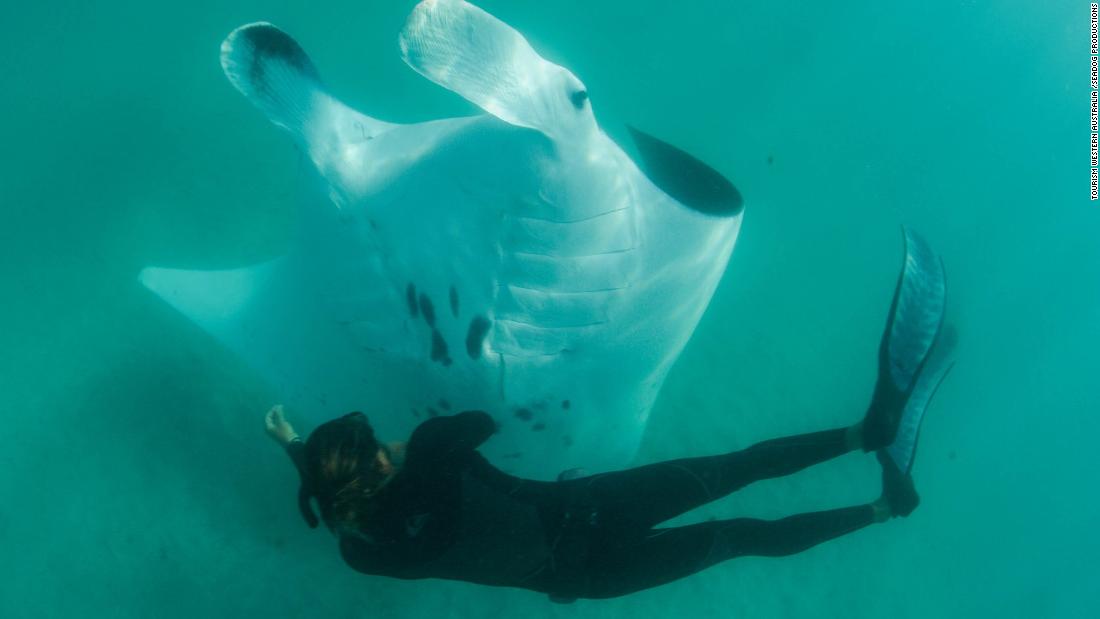

One or rarely two babies are born once every two years. Manta ray is ovoviviparous animal which means that female gives birth to live babies.

Natural enemies of manta rays are large sharks and killer whales. Researchers believe that this behavior facilitates elimination of parasites and plays role in the communication. Manta ray regularly visits "cleaning" stations where various species of small fish (such as wrasses) eliminate parasites from the surface of the body. Manta ray is not social animal, but it can be occasionally seen in the large groups in areas that provide plenty of food. Manta ray needs to swim constantly to stay alive (swimming ensures continuous flow of water rich in oxygen through ventrally-positioned gills).

Manta ray is also known as "devil ray" due to cephalic fins that look like horns. It can consume around 60 pounds of food per day. Manta ray has cephalic, flat fins on the each side of the head that are used to direct food toward the mouth. Its diet is based on the plankton, small fish, segmented worms and krill. Manta ray is a carnivore and filter-feeder. Manta ray has the largest brain (relative to body size) of all known species of fish and ability to keep its body temperature more-less stable (unlike many other species of fish). Manta ray gracefully glides through the water by using its pectoral fins which move in the same way like wings of birds. Lower jaw contains 300 rows of small teeth covered with skin. It has short tail without poisonous spike on its end. Manta ray has broad head, large mouth, horizontally flattened body and large, triangular pectoral fins. Manta ray has dark or black-colored back and white belly covered with dark blotches and spots which are used for identification of individual animals. Manta ray has a wingspan of 18 to 23 feet and it weighs nearly 3.000 pounds. Thanks to all these factors, manta rays are classified as vulnerable. Number of manta rays in the ocean is declining due to pollution of the sea, by-catch (entrapment in the fishing nets by accident) and uncontrolled collecting from the wild (gill rakers of manta ray are used in traditional Asian medicine). Manta rays are rarely kept in the captivity because of their large size. They can be found in the tropical and subtropical parts of Indian, Pacific and Atlantic Ocean. There are two species of manta ray: giant manta ray and reef manta ray. Manta ray is marine fish that belongs to the family of eagle rays.


 0 kommentar(er)
0 kommentar(er)
